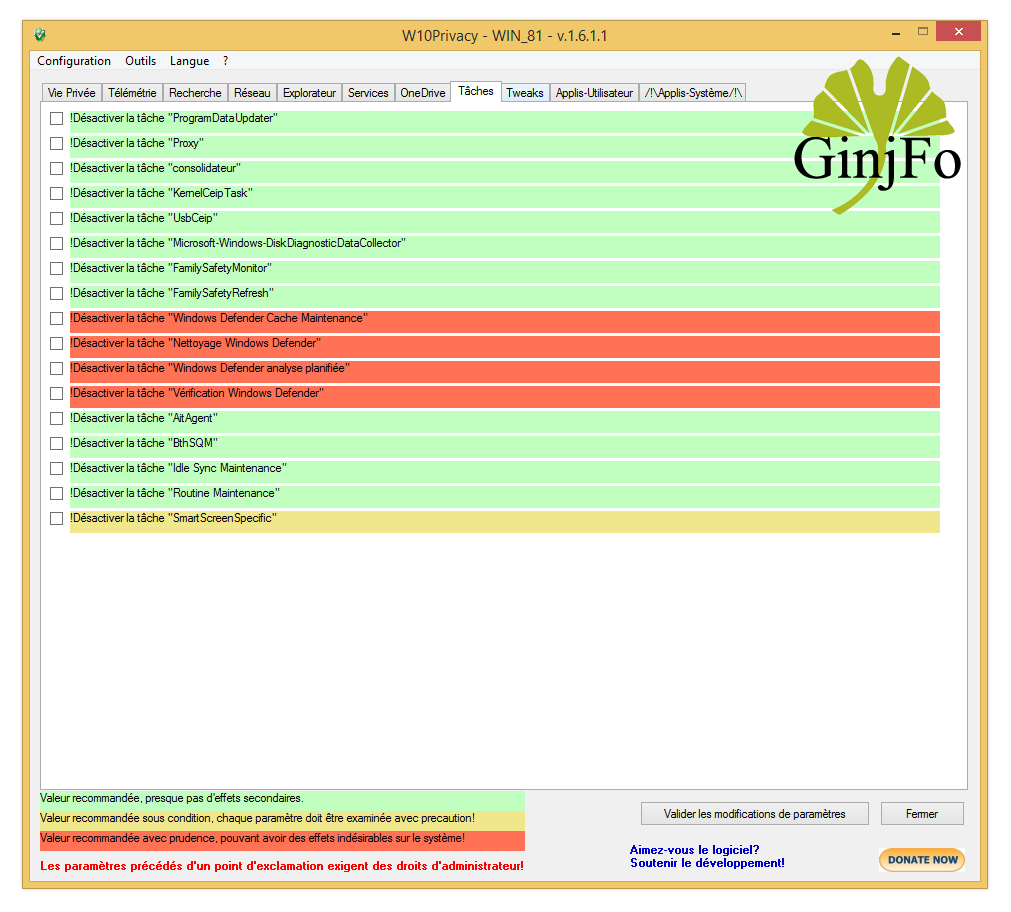

This makes the selection significantly easier to browse, but it does seem a loss that there is no Search function to locate particular options quicker. These preferences are also sorted into categories, consisting of Privacy, Apps, Telemetry, Search, Network, Explorer, Services, Edge, Internet Explorer, OneDrive, Tasks, Tweaks, Firewall, Background-Apps, User-Apps, and System-Apps. The terminology isn’t the friendliest to users without experience, but W10Privacy elaborates and explains when the cursor hovers over the option. Restricted recommended settings are highlighted in red, and can potentially negatively impact the system if changed from their default state. Yellow, or amber, is conditionally recommended, requiring the user to look into the option they’re about to alter before confirming any changes. Using a traffic light structure, green means that the user can change the setting with almost no noticeable fallout beyond the loss of the option’s direct functionality. W10Privacy prides itself on being accessible to all color-coding recommended actions based on their side effects to the system. W10Privacy offers 316 options in total across 16 categories, consisting of Privacy, Apps, Telemetry, Search, Network, Explorer, Services, Edge, Internet Explorer, OneDrive, Tasks, Tweaks, Firewall, Background-Apps, User-Apps, and System-Apps. Microsoft’s default stance on data protection and collection has been questionable at best in recent years, leaving the user to sift through endless menus and complicated jargon manually to reach an acceptable level of privacy. Preferences are hidden within a plethora of drop-down menus that can often contain unfamiliar terminology and changing them can sometimes bring about unforeseen repercussions.įortunately, as recommended when touching the Registry Editor, W10Privacy automatically prompts the user to create a restore point which can then be used to reset changes should anything go wrong.
#W10PRIVACY I WINDOWS 10#
While it’s possible to in Windows 10, traversing the Windows 10 Registry manually can often be a challenge for the casual user. Simply click "more info" to make the "Run" button appear.

This is a false flag, as W10Privacy is perfectly harmless. Windows Defender often flags W10Privacy as unsafe and prompts you to cancel the download.


 0 kommentar(er)
0 kommentar(er)
